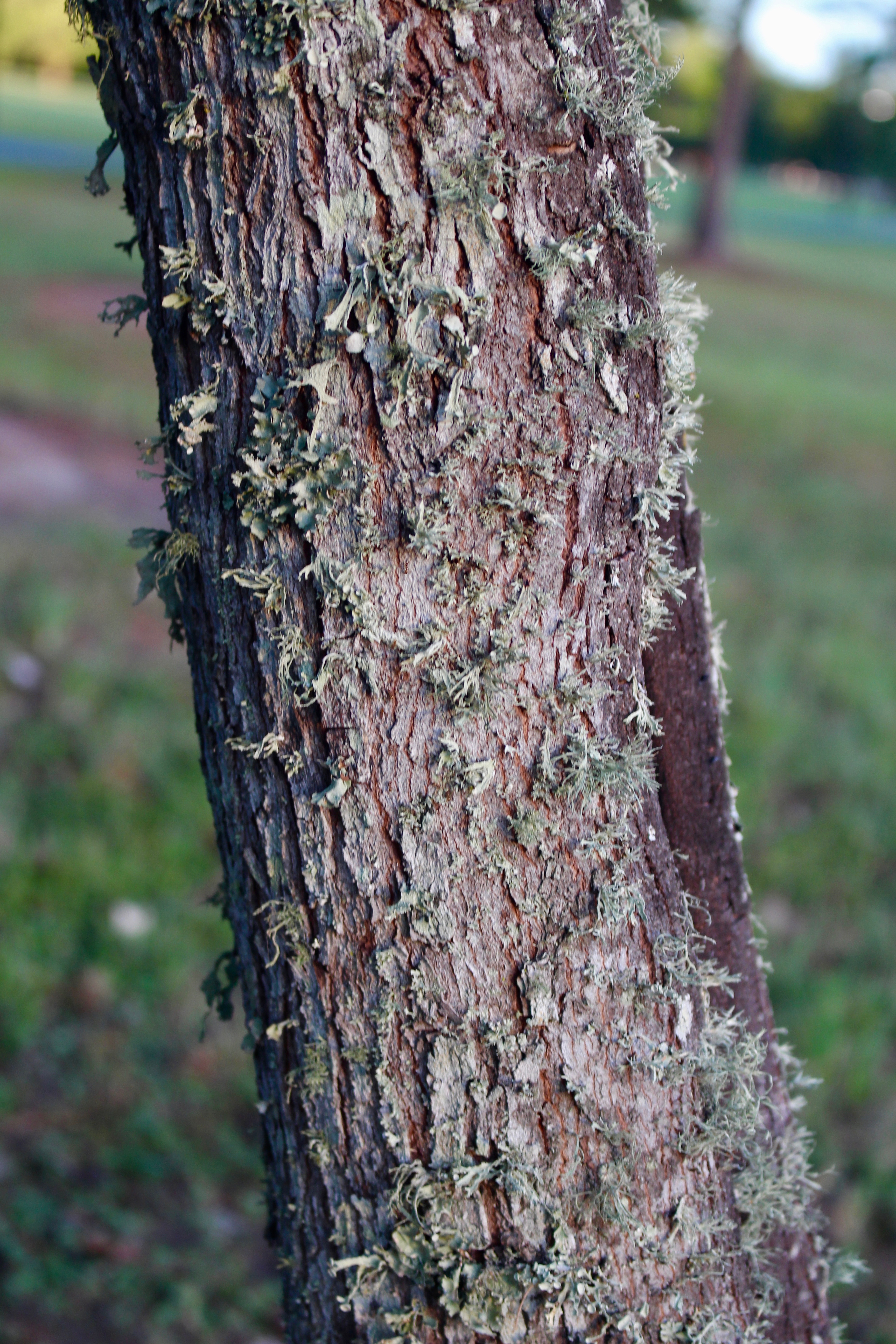By Brandt Mannchen
On June 11, 2019, on behalf of the Lone Star Chapter and Houston Regional Group of the Sierra Club, I attended a workshop on Lichen bio-monitoring that was presented by the U.S. Forest Service (FS).
 What is a “lichen”? How are lichens used for bio-monitoring? That was what Peter Nelson, a professor at the University of Maine, taught us during the workshop. Although the workshop lasted three days, I could only attend the first day.
What is a “lichen”? How are lichens used for bio-monitoring? That was what Peter Nelson, a professor at the University of Maine, taught us during the workshop. Although the workshop lasted three days, I could only attend the first day.
Lichens are the result of a deeply intimate interrelationship between an alga (known as a photobiont) and a fungus. Lichens consist of two organisms that produce food via photosynthesis. Either green algae or cyanobacteria (known as blue-green algae) form a symbiosis (live together) with a fungus which results in a new organism neither alga or fungus. This partnership has been so successful that there are almost 14,000 different types of lichens in the world. They are found at the north and south poles, tropics, intertidal zones, peaks of mountains, and on soil, rock, tree bark, and the backs of insects.
Lichens are often confused with mosses, liverworts, fungi, and algae that don’t’ live as lichens. Lichens can form a cryptogamic crust (living) with mosses and liverworts, particularly in very dry areas or soils. Lichens have been placed in the Kingdom Fungi. Lichens have been described as “fungi that have discovered agriculture” since they use photosynthetic products, like carbohydrates, or in some cases may be parasitic on an alga. While the fungus may poach food from the alga, the alga may use the fungus to protect it from drying out and radiation.
The use of lichens for bio-monitoring has been ongoing for over 40 years in Europe. Lichens can be used to determine if certain air pollutants cause biological damage in certain concentrations. Lichens can be used to bio-monitor climate change and the effects it has on living organisms. Like most organisms that are used to bio-monitor, lichens are analogous to the “canary in the coal mine”. If lichens are affected by air pollution and climate change then potentially other living things and humans may be impacted.
There are three basic types or lichen growth forms that are used in bio-monitoring. These three forms include foliose lichens (leafy with obvious upper and lower surfaces); fruticose lichens (three-dimensional and filamentous or threadlike with small scales); and crustose (have a crust-like growth pattern like a stain, paint, or dust). Lichens prefer a stable substrate to grow on like tree bark or rock. Lichens can colonize inhospitable environments and provide nitrogen for soil, food for animals., nesting material for birds and squirrels, and camouflage to hide animals (like tree frogs).
Air pollutants that can be bio-monitored, via lichens, include nitrogen compounds, ammonia, nitric acid, sulfur compounds, sulfur dioxide, sulfuric acid, fluorides, ozone, aromatic hydrocarbons, polychlorinated bi-phenyls (PCBs), radioactive compounds, and heavy metals (like copper, zinc, and lead).
Lichen surveys can include designated plots, inventories of species, and quantitative analysis due to the capability of lichens to absorb pollutants more efficiently than most organisms. For the National Forests and Grasslands in Texas (NFGT), monitoring plots with a radius of 34.7 meters, will be established. They will be monitored by a two-person team using a plot center and quadrats. The monitoring team includes a timer and an observer/recorder. The monitoring will take from 30 minutes to 2 hours.
Most of the monitoring plots will be established in Sam Houston National Forest due to its’ downwind proximity to the Houston air pollution plume which often has elevated levels of ozone, hydrocarbons, sulfur compounds, nitrogen compounds, and other air pollutants. The Davy Crockett, Angelina, and Sabine National Forests will be used kind of like controls for the monitoring since they are exposed to lower levels of air pollution.
The NFGT is looking for volunteers to conduct lichen bio-monitoring for the FS. For more information contact Rob Potts with the NFGT at Robert.potts@usda.gov or Brandt Mannchen at brandtshnfbt@juno.com.
Photographs by Amil Kanji.
References
1) Lichens of North America, Irwin M. Brodo, Sylvia Duran Sharnoff, and Stephen Sharnoff, Yale University Press, 2001.
2) Notes from Brandt Mannchen, about June 11, 2019, “Lichen Bio-monitoring Workshop”, U.S. Forest Service.